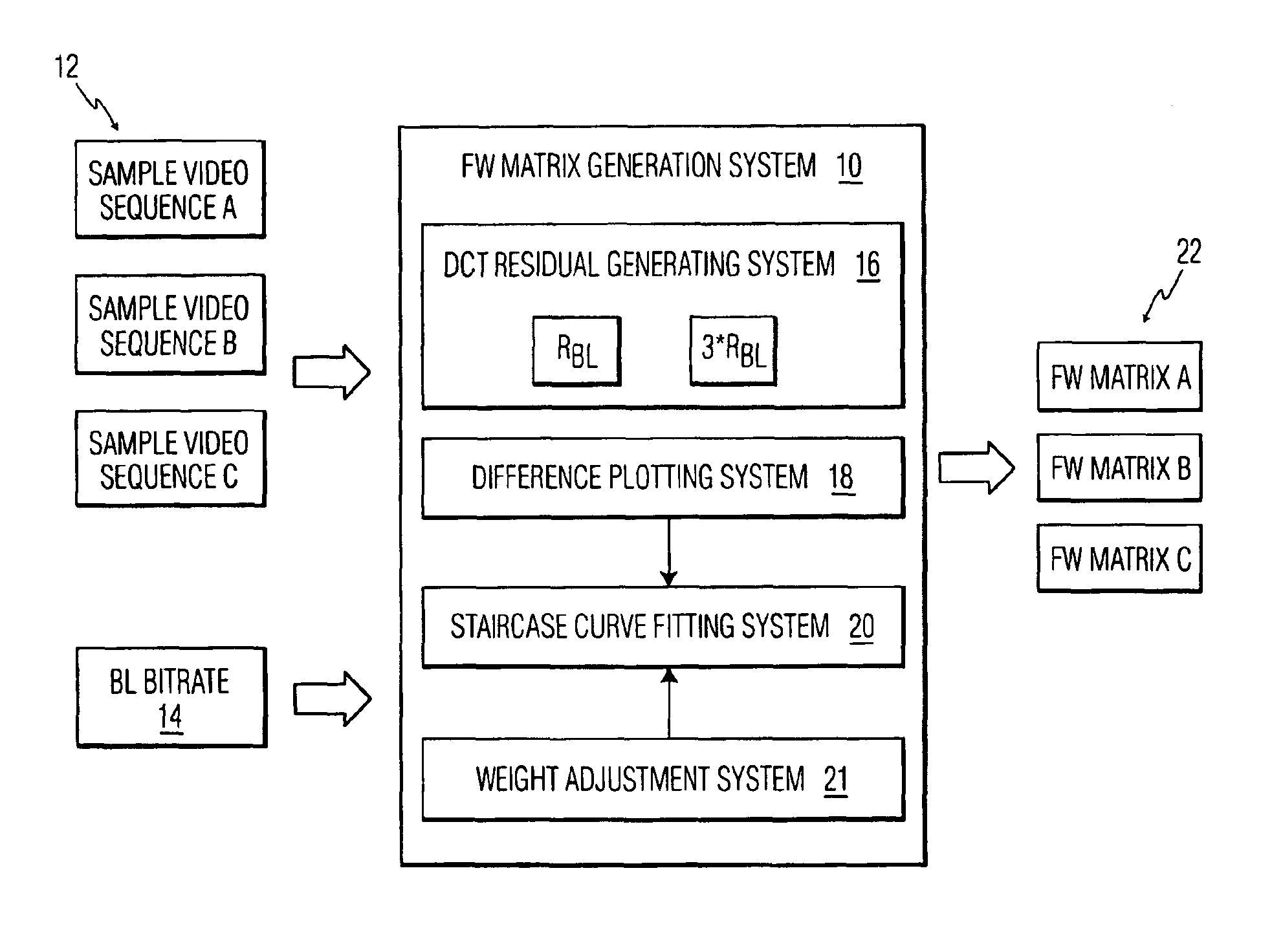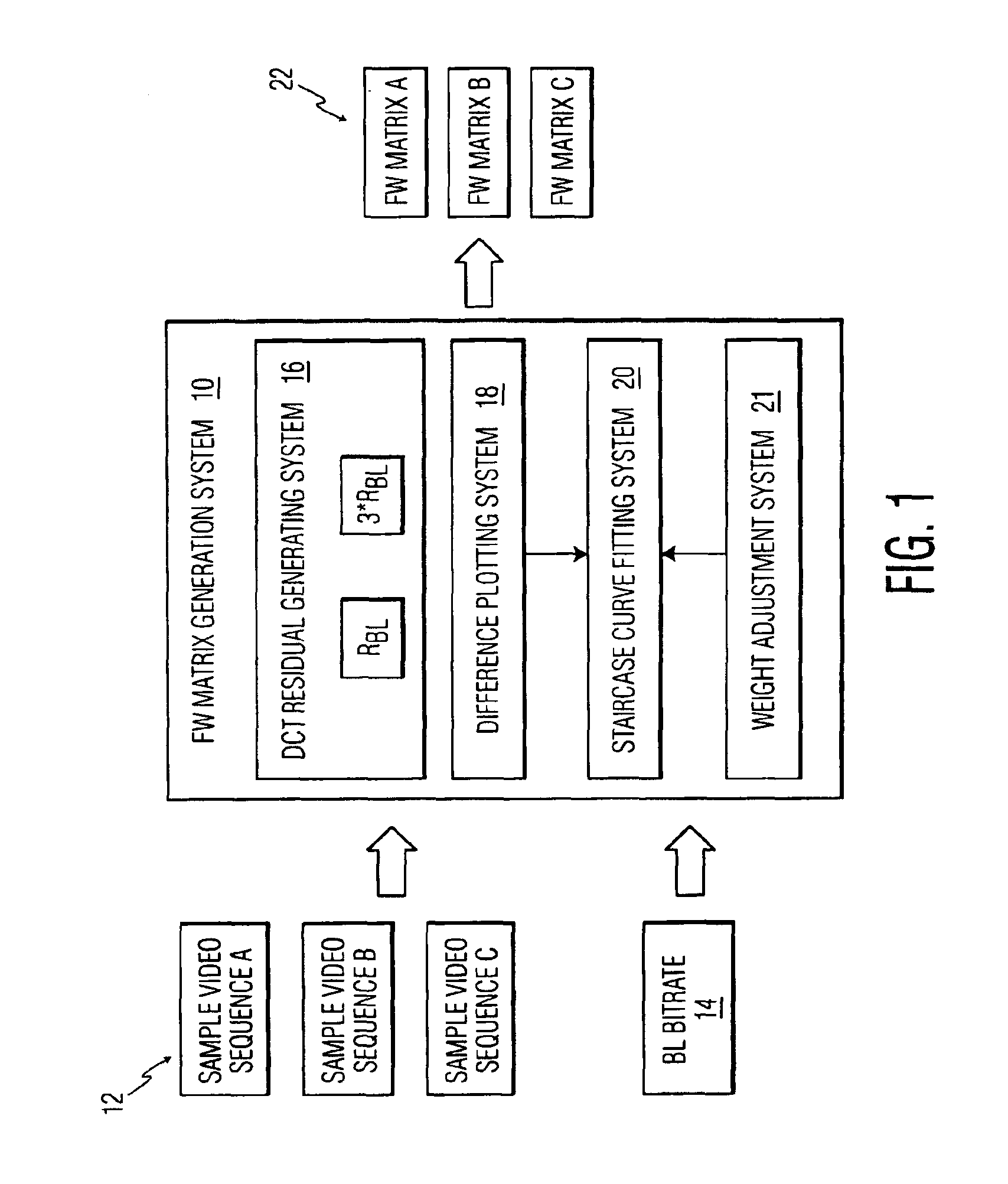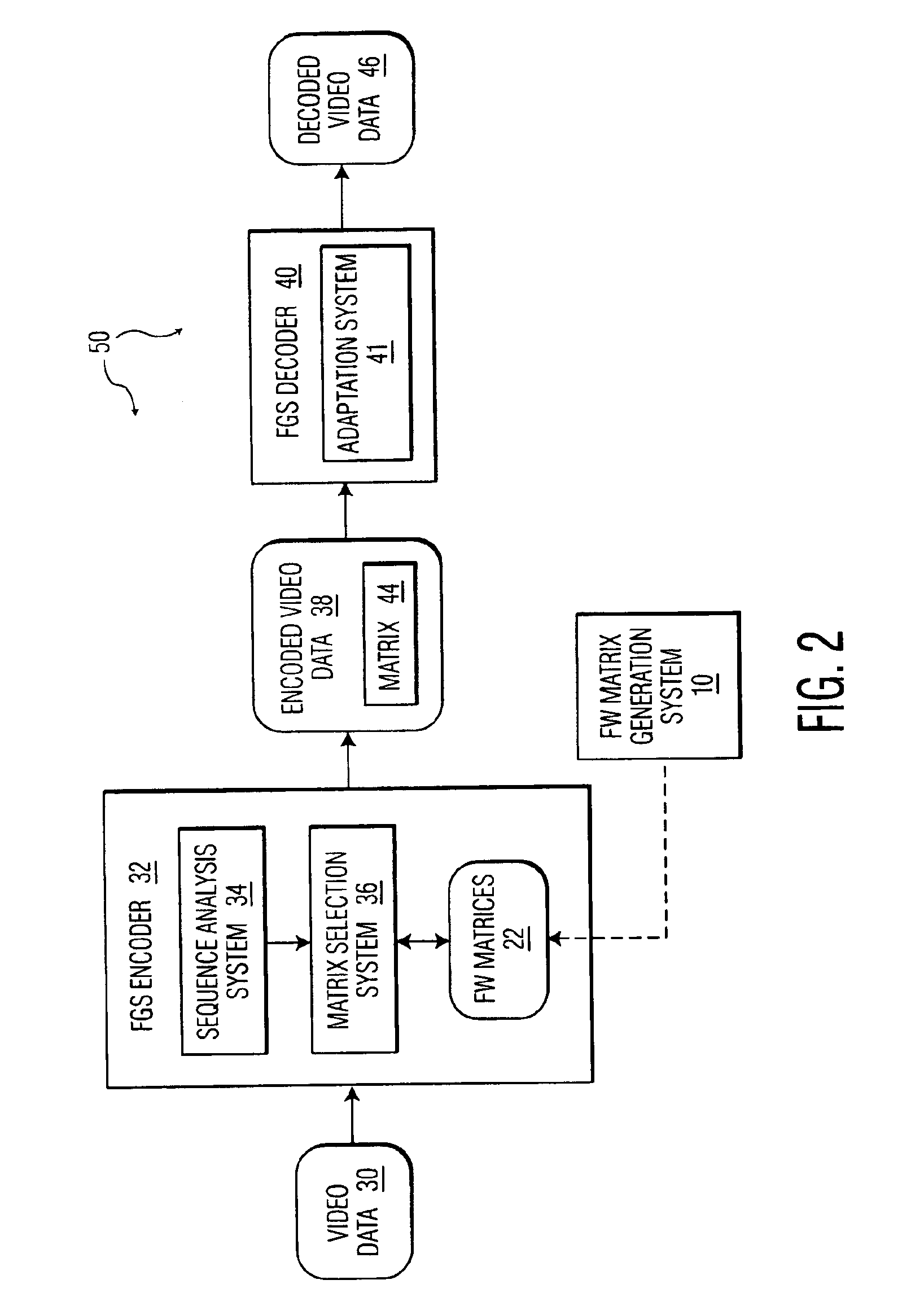Bit-rate guided frequency weighting matrix selection
- Summary
- Abstract
- Description
- Claims
- Application Information
AI Technical Summary
Benefits of technology
Problems solved by technology
Method used
Image
Examples
Embodiment Construction
[0023]Referring now to the drawings, FIG. 1 depicts a Frequency Weighting (FW) Matrix Generation System 10 that receives one or more sample video sequences 12 and a base layer (BL) bit-rate 14, and outputs a set of FW matrices 22. Each sample video sequence 12 includes a unique scene type or characteristic that might typically be processed by a Fine-Granularity-Scalability (FGS) system, such as that sown in FIG. 2. Thus, for example, “Sample Video Sequence A” might comprise a high activity scene, “Sample Video Sequence B” might comprise a medium activity scene, and “Sample Video Sequence C” might comprise a low activity scene.
[0024]FW Matrix Generation System 10 generates a unique FW matrix for each inputted sample video sequence, so that each FW matrix is associated with a predetermined scene type. Thus, for instance, FW matrix A would correspond to a high activity scene, FW matrix B would correspond to a medium activity scene, and FW matrix C would correspond to a low activity. Th...
PUM
 Login to View More
Login to View More Abstract
Description
Claims
Application Information
 Login to View More
Login to View More - R&D
- Intellectual Property
- Life Sciences
- Materials
- Tech Scout
- Unparalleled Data Quality
- Higher Quality Content
- 60% Fewer Hallucinations
Browse by: Latest US Patents, China's latest patents, Technical Efficacy Thesaurus, Application Domain, Technology Topic, Popular Technical Reports.
© 2025 PatSnap. All rights reserved.Legal|Privacy policy|Modern Slavery Act Transparency Statement|Sitemap|About US| Contact US: help@patsnap.com



